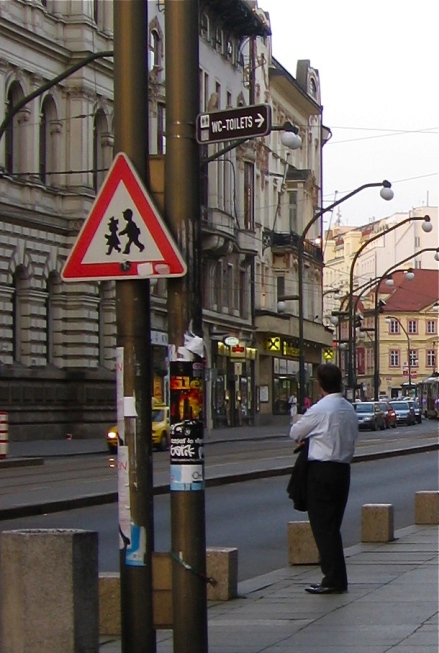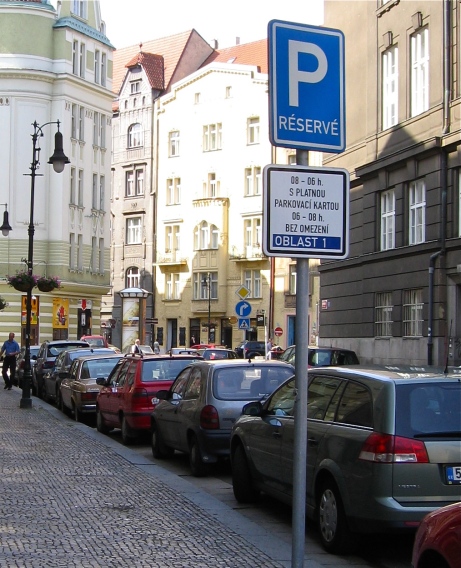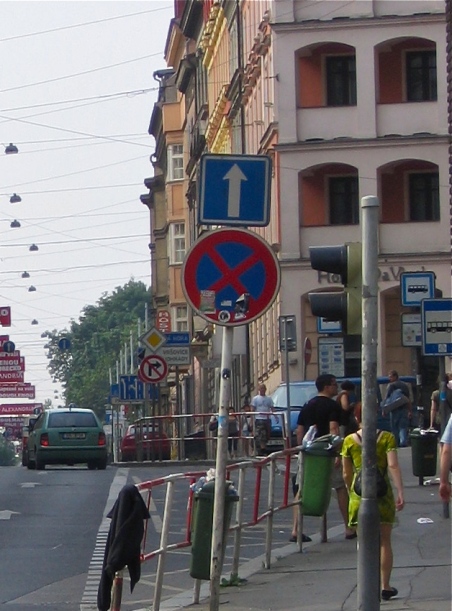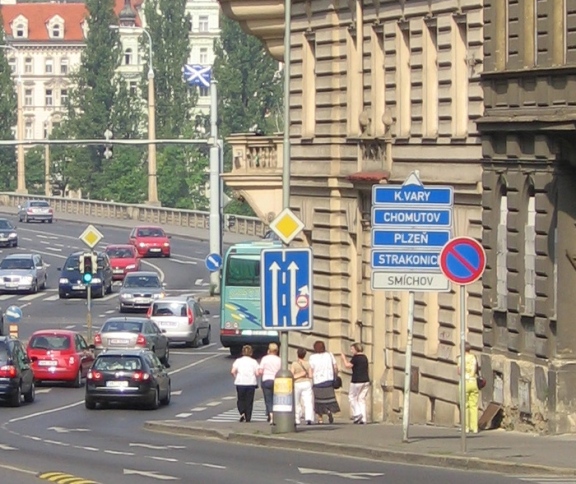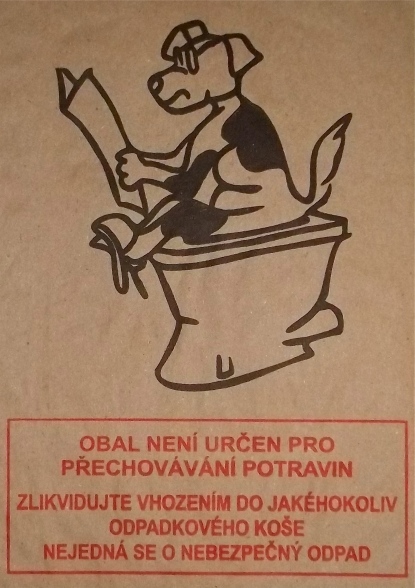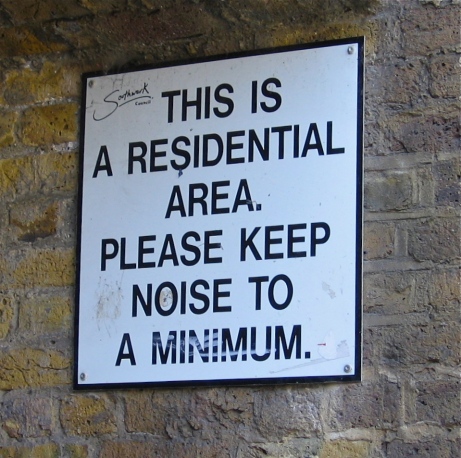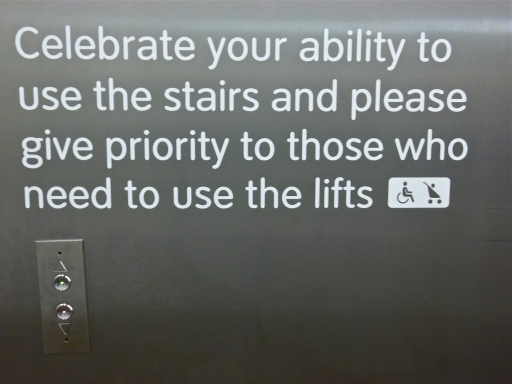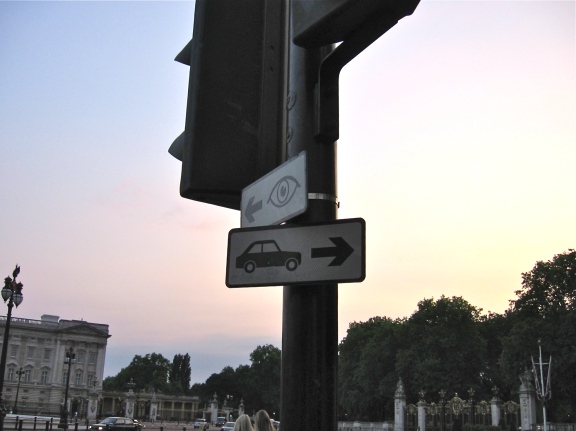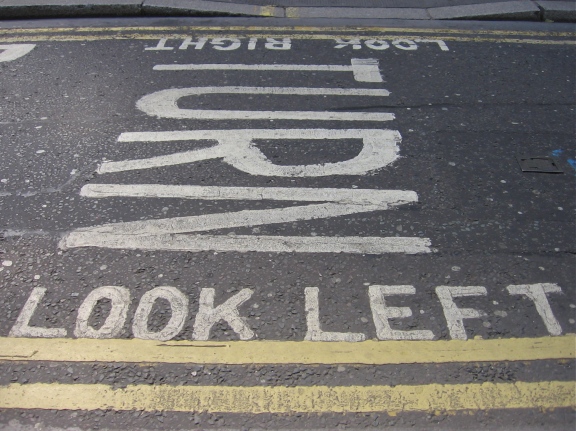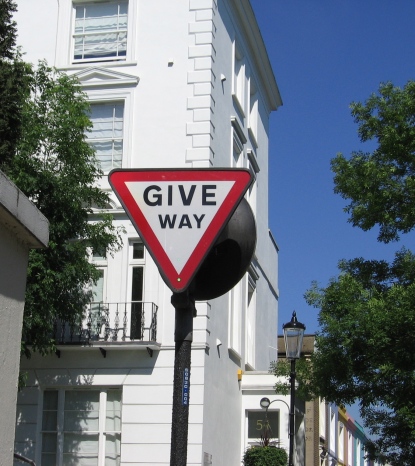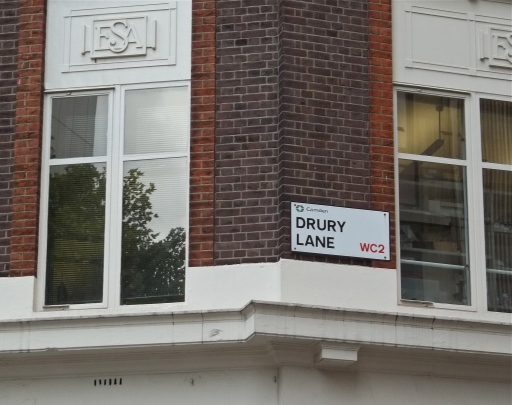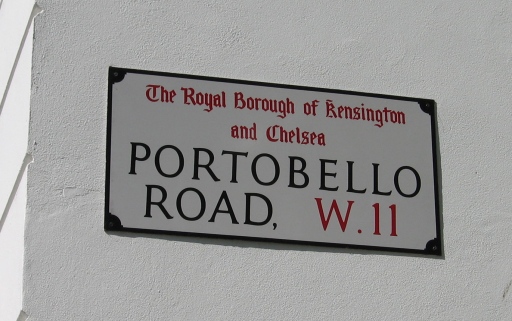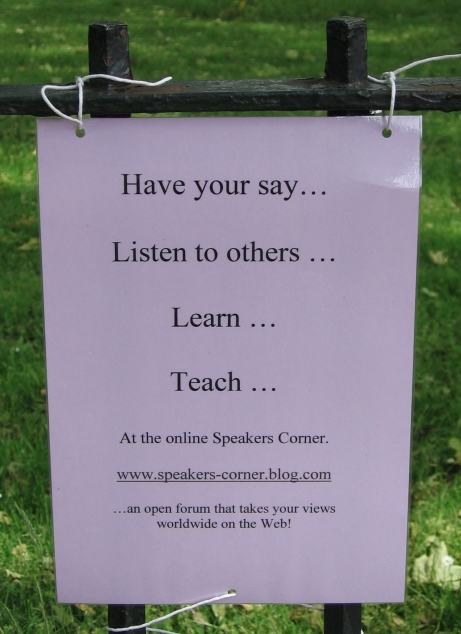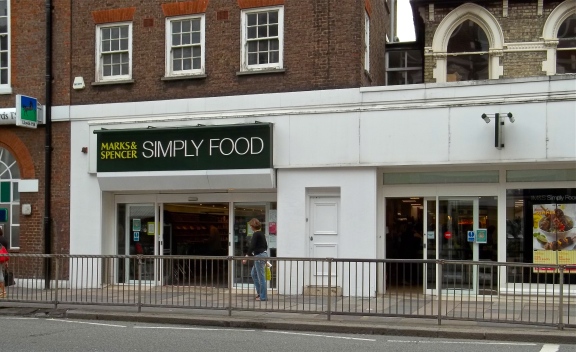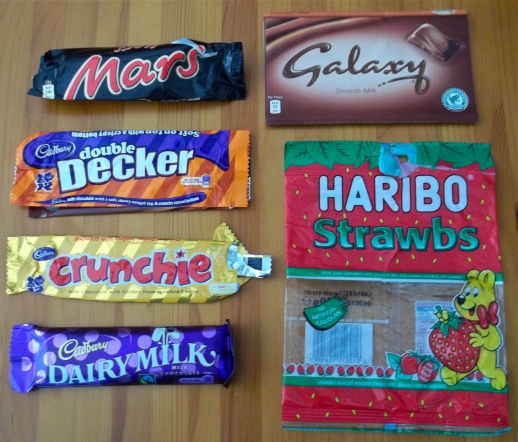In the previous installment of The Language of Signs, we took an interesting trip through the streets of London. For English speakers it was a snap to read each sign and follow directions, but what happens when signs are in a language we don’t understand?
I found myself in the middle of a language barrier when I visited Prague in the Czech Republic. If it weren’t for the excellent guidebook¹ I had in my purse, I might still be wandering through a maze of medieval streets.
That being said, Prague takes special care in making sure the throngs of tourists who visit can find their way to various sites around town. This is particularly true in the Old Town District of Prague where poles with brown signs can be found on almost every corner. They are written in Czech, but there are images on each sign to ease the language barrier.

Follow the sign to get to Charles Bridge, Kampa Island, or a tourist information office.
Photo by: c.b.w. 2008
Like London (and most of Europe), street name signs are located on the sides of buildings. However, in Prague they are usually bright red. Aside from the street name, they also include the name of the Prague district where it is located. Additionally, there are often two additional tiles near doorways or windows that indicate the street number and city registration number (often associated with the address).
Traffic signs are also a bit challenging in that Eastern European traffic symbols and colors are a little different from the West. While some symbols are universal, others can be tricky!
One of the easier signs to understand is a typical warning sign for children as pedestrians in a roadway. A little higher on the same post is a very European sign indicating the location of a public Water Closet (WC) or toilet. A little word of advice: public toilets are not free. Be sure to keep a few coins handy at all times just in case nature calls!
Another easy sign to translate is a Parking sign. I love how they always seem to be blue no matter where I go! In this instance, this section of the street is reserved those with a parking card. Further down the street, there’s a yellow diamond indicating a main road along with a blue right turn ahead sign.
It’s tough to see but beneath the right turn sign, is another sign that warns of a pedestrian crossing. Here’s a better look:
There are a number of street signs hanging out on this corner! The red X on a blue background took me the longest to understand – it means no stopping. Above it, the blue arrow sign means one way. Up the street is another yellow diamond, along with a no right turn sign. Off the to right are signs indicating bus stops. On a side note, I wonder who left their hoodie hanging on the sidewalk barrier?
This street has a lot going on, too! The blue sign with a red line running through it means no parking, (or waiting). Behind it is a sign listing Czech cities to which the road travels. Then, those yellow main road diamonds pop up again, along with signs indicating lane direction and changes. Towards the middle, there’s a blue circle with a diagonal arrow that means keep left.
Last, but not least, the Czech people have a brilliant sense of humor. In an attempt to keep sidewalks and streets clean, signs are posted with a dog on a toilet to remind people to pick up any “presents” their dogs might leave while on a walk. Beneath the sign is usually a box filled with paper bags that have the same symbol. I didn’t get a shot of the sign, but I did snag one of the bags for a souvenir. I’ve said it before – the best souvenirs are free!
Anyone up for a drive in Prague?
Happy Traveling!
– – –
1. DK Eyewitness Travel: Prague – There’s nothing like colorful visuals to help you navigate through a foreign place. Aside from Rough Guide Maps, I never leave home without a DK travel guide.
– – –
Just curious . . .
I don’t recall spotting any speed limit signs in Prague. Do they exist? If so, what is considered fast or slow?
– – –
Previous New Familiars posts:
– – –
c.b.w. 2013

